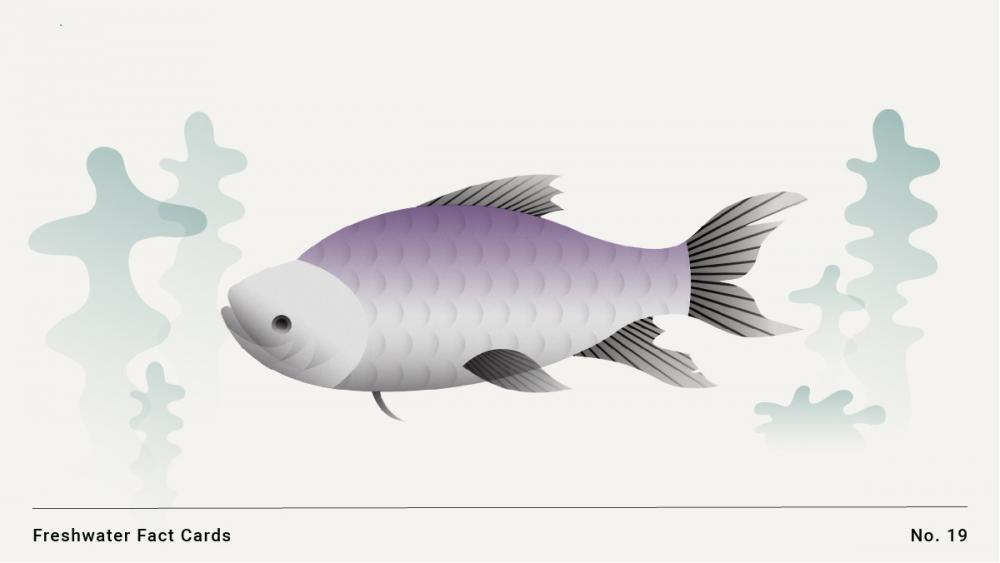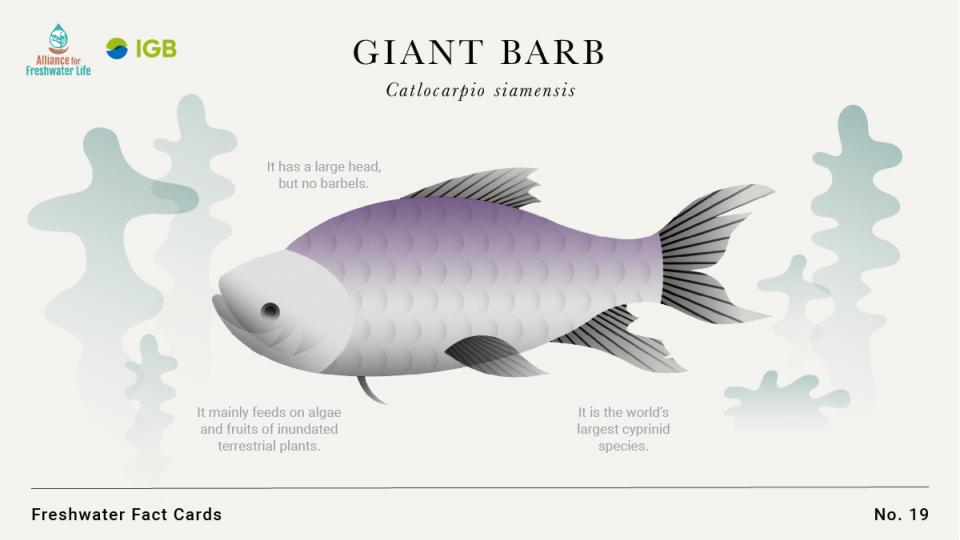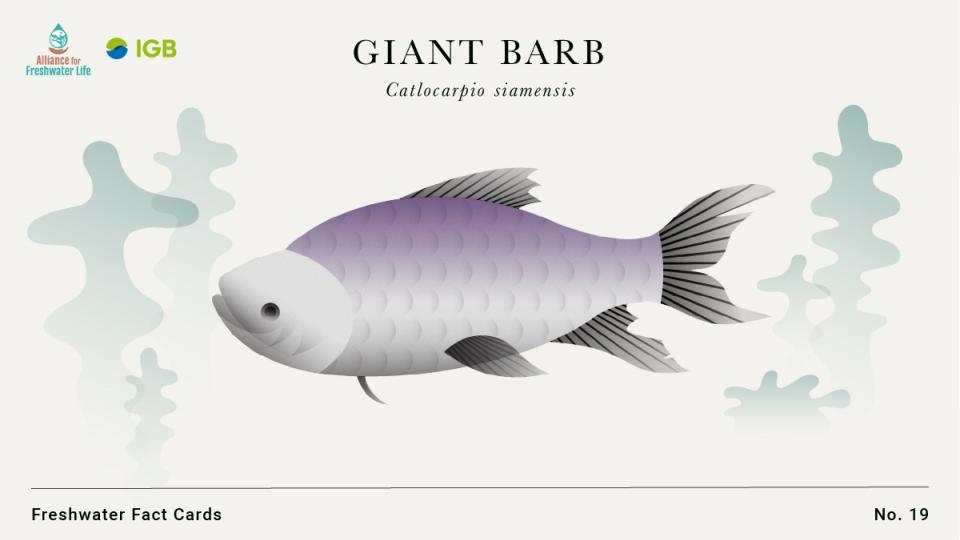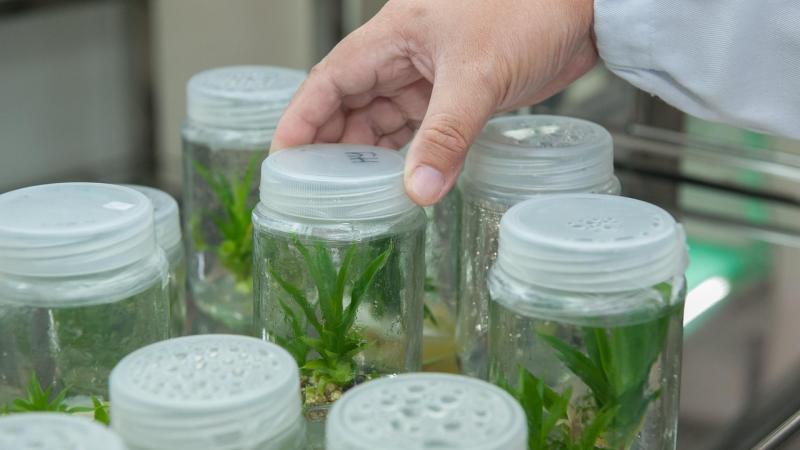
- It is the world’s largest cyprinid species.
- It has a large head, but no barbels.
- It mainly feeds on algae and fruits of inundated terrestrial plants.
- It moves to the floodplains during the rainy season and prefers deep pools in the main river channels during the dry season.
- It can reach a body mass of 300 kg.
- It is a potamodromous species, migrating solely in freshwaters, but knowledge of its migratory routes or natural spawning habitats remains limited.
- The species was once an important food fish for people in Cambodia, Laos, and Thailand.
- It was selected as Bangkok's symbolic fish to raise public awareness of freshwater biodiversity conservation.
- The wild populations have experienced drastic decline, in both abundance and body size.It has been assessed as Critically Endangered on the IUCN Red List.

It can reach about 3 m in length. In captivity, it reaches sexual maturity after about 7 years. Large females can produce over 10 million eggs. It is the national fish of Cambodia.

It has a large head, but no barbels. It mainly feeds on algae and fruits of inundated terrestrial plants. It is the world’s largest cyprinid species.





